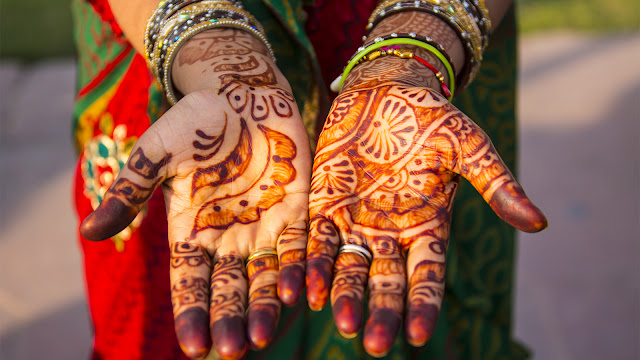 |
| The history and significance of henna art in the Middle East |
Intricate, elegant, and steeped in tradition, henna art holds a special place in the heart of Middle Eastern culture. From weddings to festivals, its presence is ubiquitous, adorning hands and feet with beautiful designs that tell stories of love, joy, and spirituality. Join us on a journey through the captivating history and significance of henna art in the Middle East, where each delicate stroke carries a wealth of meaning and heritage.
The Ancient Origins of Henna
Henna, scientifically known as Lawsonia inermis, has been utilized for centuries in various cultures for its dyeing properties and medicinal benefits. Its origins trace back to ancient Egypt, where it was not only prized for its ability to stain the skin but also revered for its supposed protective and healing properties. The art of henna application gradually spread throughout the Middle East, India, and North Africa, becoming an integral part of cultural ceremonies and rituals.
The Evolution of Henna Art
Over time, henna art evolved from a simple dyeing practice into a sophisticated form of expression and adornment. In the Middle East, skilled artisans began incorporating intricate patterns and motifs into their designs, drawing inspiration from nature, geometry, and Islamic art. Each region developed its own unique style, with motifs ranging from delicate floral patterns to elaborate geometric designs, reflecting the cultural diversity and creativity of the region.
The Symbolism Behind Henna
Beyond its aesthetic appeal, henna art carries profound symbolism and significance in Middle Eastern culture. Traditionally, it is associated with celebrations and rites of passage, such as weddings, childbirth, and religious festivals. The application of henna is believed to bring blessings, protection, and good fortune to the wearer, serving as a symbol of fertility, prosperity, and joyous occasions.
The Ritual of Henna Application
The process of applying henna is steeped in tradition and ceremony, often accompanied by music, dance, and communal celebrations. Skilled artisans, known as mendhi artists, meticulously apply the paste to the skin using fine-tipped applicators, creating intricate designs that can take hours or even days to complete. The experience is not only a form of artistic expression but also a deeply spiritual and communal ritual, fostering bonds of friendship and unity among participants.
The Cultural Significance of Henna
In addition to its ceremonial use, henna holds cultural significance as a symbol of beauty, femininity, and tradition in the Middle East. It is commonly worn by brides on their wedding day, symbolizing love, purity, and auspicious beginnings. Beyond weddings, henna is also worn during festivals, holidays, and other special occasions, serving as a tangible expression of cultural identity and heritage.
The Modern Resurgence of Henna Art
In recent years, henna art has experienced a resurgence in popularity, not only in the Middle East but also around the world. Social media platforms have played a significant role in amplifying its reach, with henna artists showcasing their intricate designs to a global audience. Today, henna art continues to evolve, blending traditional techniques with contemporary styles to create stunning works of art that transcend cultural boundaries.
FAQs (Frequently Asked Questions)
What is the significance of henna art in Middle Eastern culture?
Henna art holds deep cultural significance in the Middle East, symbolizing joy, celebration, and spirituality. It is commonly used during weddings, childbirth, and religious festivals as a symbol of blessings and good fortune.
How long does henna art last?
The longevity of henna art depends on various factors, including the quality of the henna paste, the skill of the artist, and how well it is cared for. Generally, henna stains can last anywhere from one to three weeks, gradually fading over time as the skin naturally exfoliates.
Is henna art safe for everyone?
While natural henna paste is generally considered safe for most people, it's essential to be cautious of black henna products that may contain harmful additives such as para-phenylenediamine (PPD). Individuals with sensitive skin or allergies should perform a patch test before getting henna art done.
Can men wear henna art too?
Yes, henna art is not limited to women and is often worn by men during special occasions and celebrations in the Middle East. However, the designs may vary, with men typically opting for simpler and more geometric patterns.
What is the significance of bridal henna?
Bridal henna, also known as mehndi, is an integral part of Middle Eastern wedding traditions. It symbolizes love, purity, and auspicious beginnings, with intricate designs adorning the bride's hands and feet to bring blessings and good fortune to her married life.
How can I learn more about henna art?
To delve deeper into the art of henna, consider exploring books, online tutorials, workshops, and visiting cultural events where henna artists showcase their craft. Additionally, connecting with local henna artists and communities can provide valuable insights and opportunities to learn more about this ancient tradition.
Conclusion
In conclusion, the history and significance of henna art in the Middle East are as vibrant and captivating as the intricate designs themselves. From its ancient origins to its modern resurgence, henna art continues to captivate hearts and minds around the world, serving as a timeless symbol of beauty, tradition, and cultural heritage.